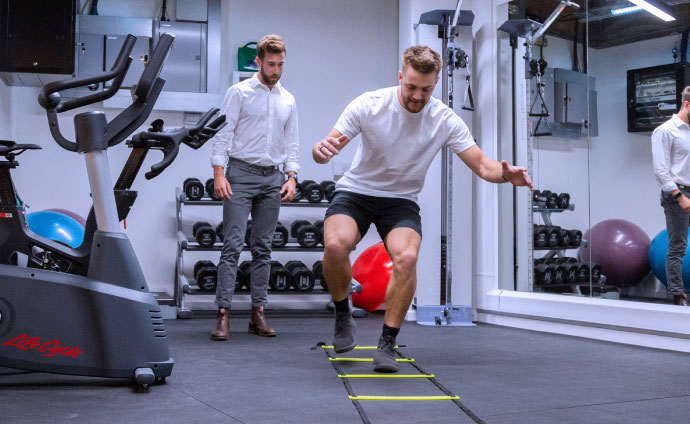Whether you’re a seasoned runner or new to pounding the pavement, it can be tricky to tell the difference between a bit of a niggle versus an issue that could develop into a full-blown injury.
Sometimes, it’s fine to push through a bit of discomfort to get the fitness results you’re looking for. But if you push through and make a budding injury worse, you could find yourself out of action for weeks, months or even suffering from permanent damage, which will definitely set you back with your fitness goals more than if you’d initially rested for a week or two.
But how do you know when to rest and when to push through the pain?
Seeking an assessment from a professional physio is one of the best ways for you to get a fast and accurate diagnoses. Not only will they be able to identify exactly what the problem is, they’ll be able to devise the appropriate treatment plan to help you get back to running as fast as possible.
Here are some of the main questions a physio will be able to help you answer:
What is the difference between a niggle and an injury?
A niggle is an infrequent and mild pain or discomfort that won’t really impact your ability to run, explains one of Spectrum’s lead physio’s, Rob Foyster.However, if you’re experiencing pain in the same place, for example your hamstring, every time you run and there are consistent symptoms in the same area, that would be considered an injury.
Rob also says that it’s important to understand that while something might start out as a niggle, if it becomes painful to the point of impacting your ability to run, that’s when it may have evolved into an injury. And as soon as this happens, you should get a proper assessment from a qualified physio.
Should I rest or can I keep running?
To be honest, this will entirely depend on your condition. In some cases, it will be totally fine to run through the injury, normally in conjunction with other strengthening treatment. But in other instances, you will have a much faster recovery if you lay off running and rest up.
The beauty of seeing a physio is that it takes the guesswork out of this decision for you. Your first session at Spectrum will always begin with a comprehensive assessment so your practitioner has a deep understanding of your condition and any contributing factors around it and only then will they make recommendations regarding your treatment and return to running.
Is the pain I’m feeling normal?
Sometimes understanding the difference between ‘good’ pain and ‘bad’ pain is tricky. While truly being in pain is probably not ever a good thing, a level of discomfort or temporary pain when you’re pushing your fitness boundaries is common. And, if you’re returning to running for the first time after recovering from an injury, it can be painful!
Knowing whether it is part of the expected recovery process or whether it’s doing further damage to your injury is crucial and this is something your physio can help you understand.
I had a patient who was returning to running for the first time after injuring her hip, says Ant Brightwell, one of Spectrum’s lead physios.I spoke to her beforehand and warned her that it was going to hurt, but that was okay in this instance and she had gone through the treatment plan and getting moving again gently would actually help her recovery. I could coach her through the types of sensations she should expect to feel, to help put her mind at ease about returning to running – and also help her recognise a ‘bad pain’ feeling in the event that it arose.

What sort of physio treatment might work for me?
Once you’ve been assessed by a physio at Spectrum, we will develop a personalised treatment plan just for you. It will not only consider your injury, but also your fitness goals, lifestyle, biomechanics and any other relevant factors. While each person’s treatment will be unique to them, gait assessments are a commonly used tool when devising a plan for runners.
At Spectrum, our gait assessments looks at how your feet hit the ground, as well as how the rest of your body moves as you walk and run. This helps us understand the impact on your feet’s surrounding joints and areas of the body. We use the latest technology available to collate all this information into a unique profile of your gait, which then informs the basis of the personalised treatment plan we devise for you.
How will I know when I’m ready to get back to running?
When our physio treatment plan has gotten you to the point that we (both us and you!) feel you’re ready to return to running, we’ll give you appropriate exercises and self-management tools to be able to manage your injury if it begins to happen again. Hopefully this means that, at worst, you’ll be dealing with minor niggles rather than battling injuries as you take your running to the next level.
Contact the team at Spectrum to book in a gait assessment or treatment session today.



